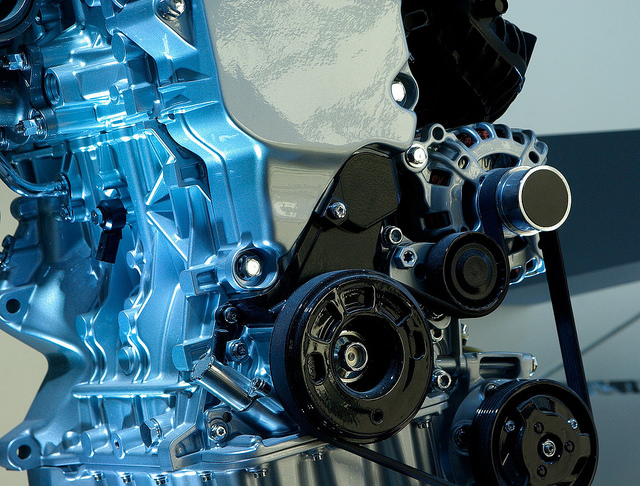
Not everyone can or should be a full-time mechanic, but there’s always room to learn more about your car’s engine. The more you know, the better chance you will have at keeping your car’s parts and engine in good running condition.
This week, we’ll be focusing on a small but important part of your car—the timing belt. This unassuming part of the engine is key to ensuring that your car runs smoothly and at its optimal efficiency. Read on to learn more.
What Timing Belts Do
Belts and hoses are some of the most inexpensive parts of an engine. However, if they fail or break, they can lead to some relatively serious engine damage and costly repairs. In particular, your car’s timing belt is a major part of the engine because of its function. What it does is synchronizes and coordinates the rotation of parts like the crankshaft and camshaft. This allows the engine valves to open and close at the correct time during the engine’s operation. The belt uses teeth to provide grip so the parts will turn in coordination.
If the timing is off, or the timing belt connection is weak, it could be disastrous for your engine. For instance, the pistons can strike the valves, causing damage to the engine. It's important that the timing belt is correctly installed, in good condition, and properly adjusted.
Timing Belt Failure
There are a few different ways that a timing belt can fail. These include:
- Stripped teeth on the belt: Leads to a slipping belt on smooth sections
- Unraveling of the belt’s fiber cores
- Belt breakage (somewhat uncommon)
- Incorrect belt tension—excess strain (if too tight) or "whipping" (too loose)
In addition to failures with the belt itself, the engine may have hiccups with the belt tensioner or a belt derailment.
How to Tell if You Need a Timing Belt Replacement
There are a few ways you can tell if your timing belt needs to be changed. Here's what to look for:
- A high-pitched sound coming from the engine
- Visual signs of belt damage—cracks, dirt/debris, glazing (a glossy look caused by the belt drying out and becoming stiff)
- Slow or sluggish engine starts, or a failure to start
Some manufacturers suggest that you change the belt after 90,000 miles. This is just an estimate of course, and you should bring your car in for an inspection if you’re unsure of the belt’s condition.
Again, if you’re unsure about your car’s timing belt, it’s better to be safe than sorry. If left unchecked, a broken belt can leave you stranded on the highway in no time.
Stop by Convoy Auto Repair today if you need to have your timing belt checked or replaced! As San Diego’s favorite auto repair shop, our team is happy to assist you with all your repair and complete check up needs.